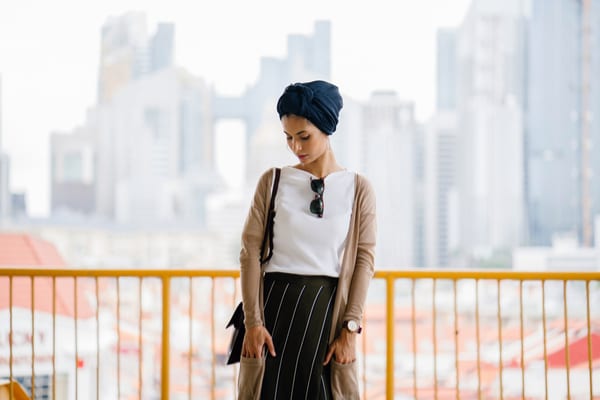Thanks to social media and technology, fashion designers and retailers have felt a shift in the balance of power between customers and corporations. As a luxury commodity, fashion has historically been defined by its exclusivity, a slightly out-of-reach ideal that the masses aspire to obtain. But now it seems just as vital, if not more so, for these brands to reach out to and connect with customers on a cultural level, including holding a strong point of view that aligns with their values.
Competition is only getting tougher between brands right now, as a trend of “more modest growth” is expected for the next seven or eight years. One of the major shifts to shape luxury for the next few years will be culture increasingly defining what people buy. As customers look to fashion to communicate a clear point of view on cultural and political issues it will be up to those companies to respond if they expect to gain market share.
The growth of modest and modest-accepted fashion—clothes that might not be designed explicitly as modest fashion but still satisfy its demands—is one example. Experts estimate that nearly 40% of women’s luxury ready-to-wear can already be categorized as modest fashion. The woman buying these clothes isn’t just shopping for style and quality, but also based on religion and culture. Many luxury labels are creating marketing campaigns and “exclusive” modest designs to attract her business.
Today there are sites like The Modist, a site committed to providing a curated edit of stylish, luxury fashion for those that take a modest approach to dressing. The Modist is the brainchild of Ghizlan Guenez, who worked in finance for 15 years while splitting her time between London and Dubai. For her, shopping for modest clothing was a challenge, even in Islamic Dubai.
“I lived in the Middle East the majority of my life and women in my family dress modestly but are very diverse. Some wear the hijab, and some don’t, but we are all modest and we all love fashion,” she says. “Our shopping experience was always very time consuming, very frustrating. And yet there wasn’t a platform that spoke to us in an elevated way, in a fashion-forward way where the style piece is not taken out of the equation.”
Says Guenez, “There are misconceptions about what modesty is. I think that when you speak to modesty, sometimes there are certain perceptions that modesty is this certain religion, this certain region, a particular age and particular look. We want to change those perceptions. We are saying that modesty can be so many different things, can be coveted by so many different women, and that it can be cool and beautiful and elegant and everything a woman wants.”
Guenez feels that, even in luxury fashion, you can play with accessories and shoes, experiment with different moods, and express yourself with patterns and colors. But ultimately, she says the most important thing is for consumers to “stay true to your style, no matter the occasion. I feel that I have the flexibility and the liberty to dress the way I want to dress, and I wouldn’t change that to meet an investor. I think it is important that the investor actually sees me as one of the clients and one of the women to whom I speak.” And Fashion Designers and Retailers wanting to stay ahead of the pack better be listening.
—
Photo Credit: mentatdgt / Shutterstock.com
